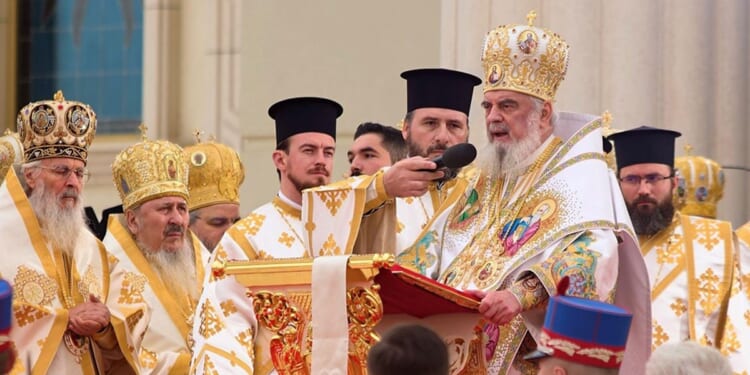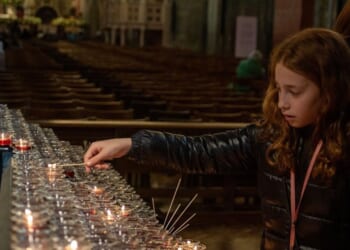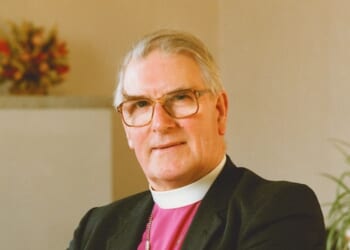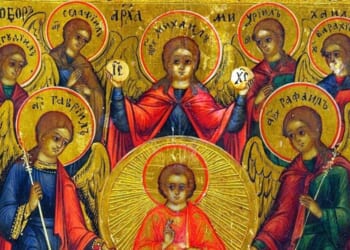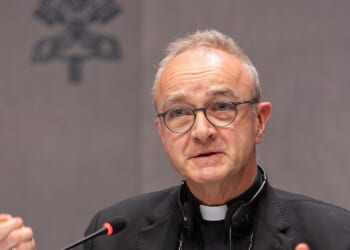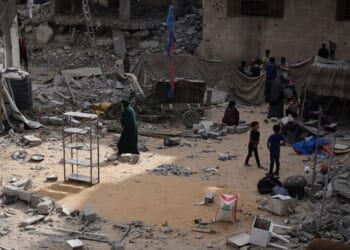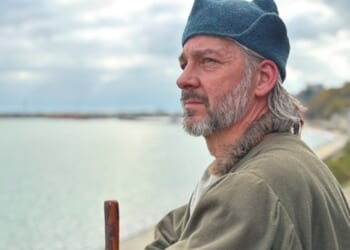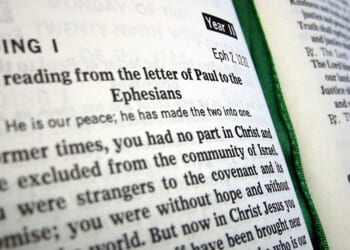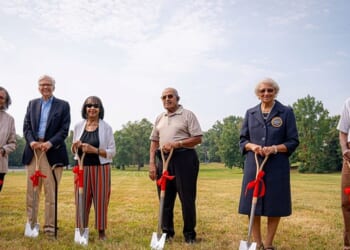AFTER taking 15 years to build, at a cost of more than €250 million, the world’s largest Orthodox cathedral, the Romanian People’s Salvation Cathedral or National Cathedral, Bucharest, was officially opened on Sunday.
Thousands of worshippers gathered to observe Patriarch Daniel of Roman and the Ecumenical Patriarch, Bartholomew of Constantinople, consecrate the cathedral’s mosaic iconography in what was seen by many as a moment of national pride and spiritual importance.
The cathedral, on Arsenalului Hill, next to the Communist-era Palace of Parliament, was begun in 2010, and the altar was consecrated in 2018. The cathedral’s dedication is the Ascension of the Lord (Heroes’ Day) and St Andrew the Apostle, Protector of Romania.
Rising to a height of 127 metres, the cross on the main, Pantocrator, which weighs seven tonnes, is prominent in the cityscape.
Patriarch Daniel expressed “profound gratitude” to the Romanian authorities for both financial and administrative support for the project.
He also spoke of the wider ecclesial dimension of the occasion, describing Patriarch Bartholomew’s continuous support as “a powerful testimony to the unity of Orthodoxy and to the constant support of the Ecumenical Patriarchate for the administrative freedom and dignity of the local Churches”.
The National Cathedral contains large mosaic iconographic ensembles, covering 25,000 square metres and selected to reflect the influences of Byzantine and Romanian medieval art.
The Romanian Orthodox Church’s website describes the cathedral’s architectural style as a “vivid synthesis of Brâncovenesque porches, Moldavian recessed niches, and slender Transylvanian towers”.
The centenary of the patriarchate is being celebrated this. The Church became autocephalous in 1885 by a decree of Patriarch Joachim IV of Constantinople. Of Romania’s 19 million people, 85 per cent declared themselves Romanian Orthodox in the country’s 2021 census.
The completion of the project is seen as the realisation of a dream of many generations of Romanians, rooted in Romania’s declaration of independence in 1877 and the reign (1881-1914) of King Carol I after the defeat of the Ottoman Empire in the Russo-Turkish War.
On Sunday, Patriarch Daniel prayed that the accomplishment would turn into a “moment of strengthening our faith and fraternal love. . . The celebration of an event within the Church can also be a time of renewal in our mission, a spiritual refreshment for a new beginning, to the glory of God and for the salvation of the people.”
The Italian anthropologist Giuseppe Tateo, however, who published a book after the construction of the cathedral, told the website Balkan Insight that the massive project was less likely to result in a religious revival, as fewer Romanians, especially the younger generation, “identify as believers or feel connected to Orthodoxy”.
The construction came at a substantial cost, which has been criticised. Balkan Insight reported that only one tenth was met by the Church’s own efforts, and that the government provided the remainder.

